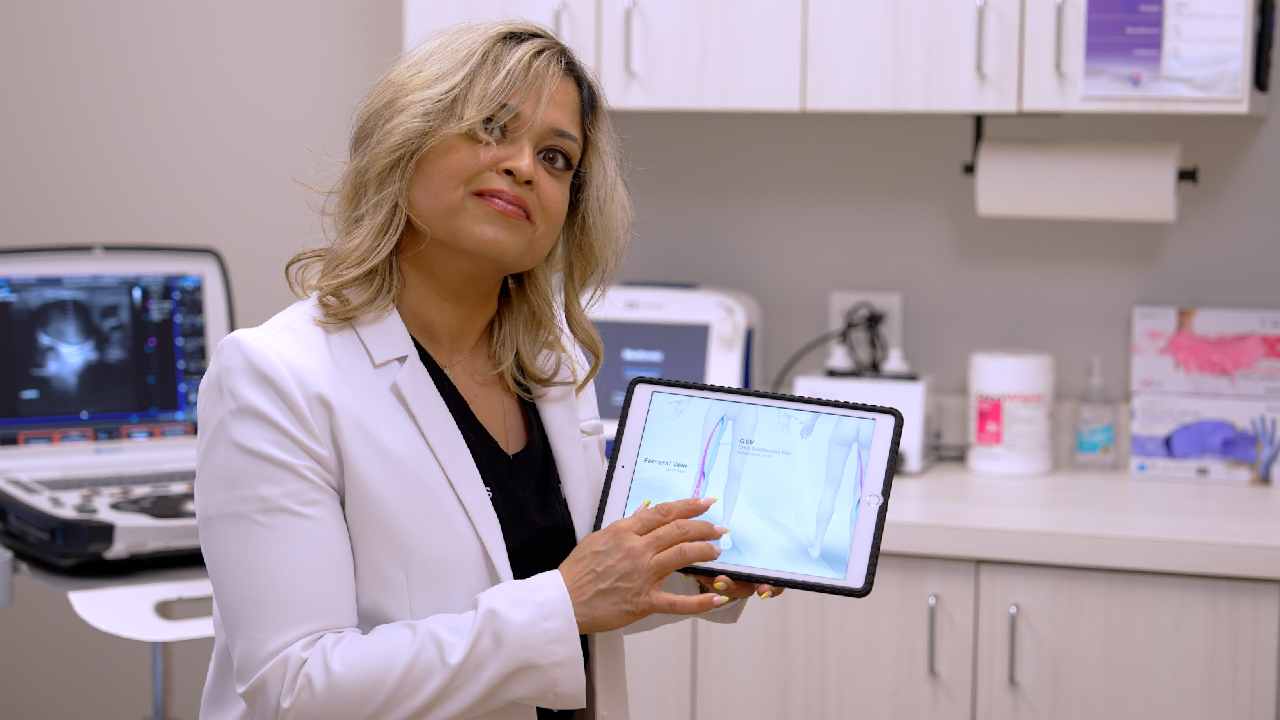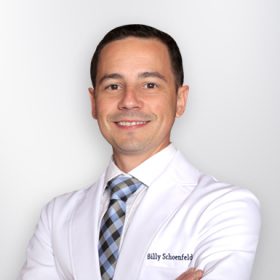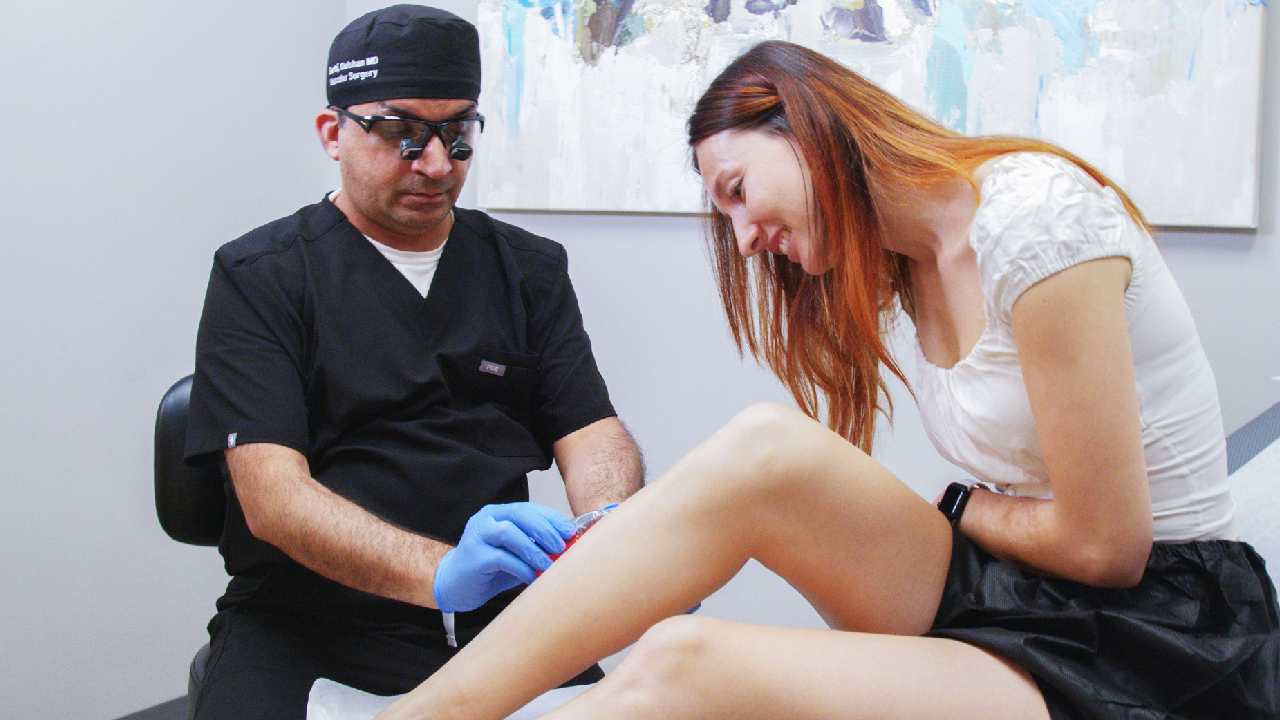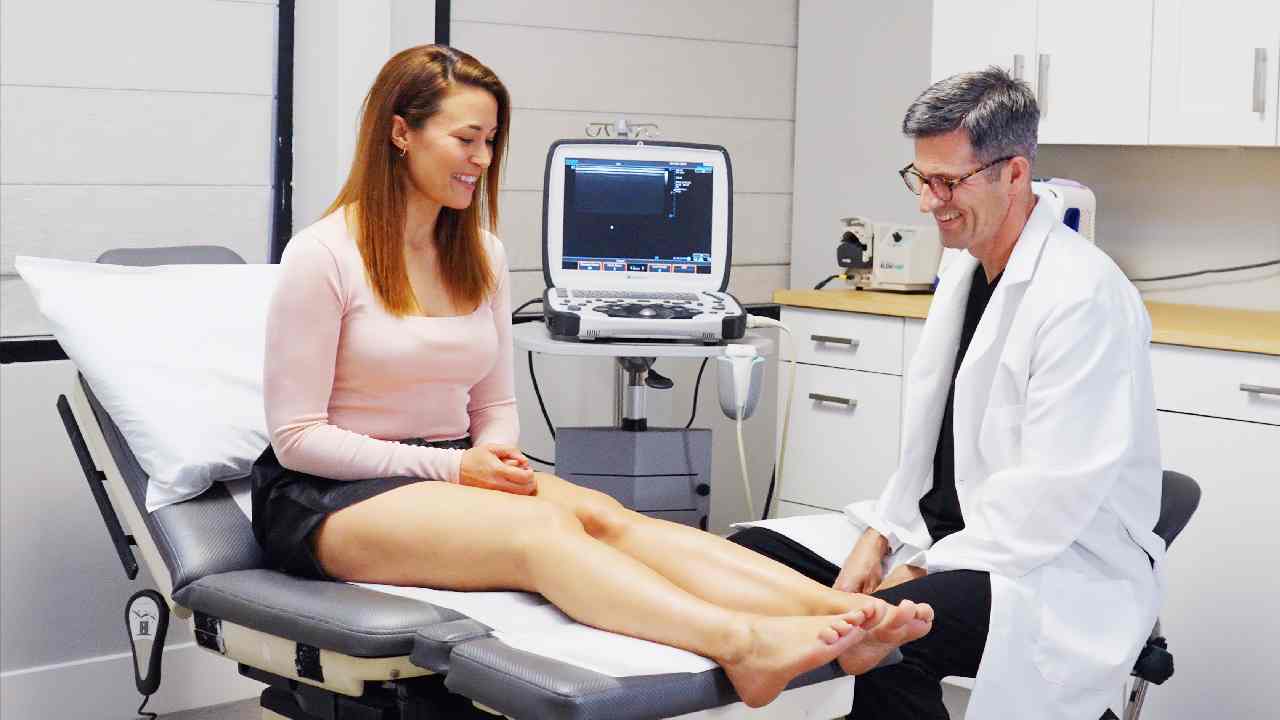
5 Spider Vein Treatments at Home: Do They Work?
When you notice small, thin veins resembling spider webs or tree branches appearing on your legs, it’s hard not to feel self-conscious. These spider veins often appear on the thighs, calves, and ankles, causing discomfort and concerns about how they affect your appearance. You might experience a feeling of heaviness, pain, or itching in your legs along with these visible veins, leading you to search for ways to reduce their appearance and alleviate symptoms.
Spider veins can sometimes be managed with treatments at home, providing relief from symptoms like pain, swelling, or a feeling of heaviness. However, it’s essential to understand that at-home remedies can help with the symptoms but cannot address the root cause of spider veins. More advanced options are available if you’re looking for permanent relief or effective treatment. At Vein Treatment Clinic, our team of vein doctors offers comprehensive treatments to manage spider veins and their underlying causes effectively. Learn about our vein treatment clinics to find a location near you for personalized care.
Are you interested in getting more information about your condition or getting a treatment?
Fill the form below to start!
What are the best spider vein treatments at home?
While at-home treatments can provide some relief from the symptoms of spider veins, it’s important to keep in mind that they won’t remove spider veins completely. However, they can help reduce discomfort and slow the progression of visible veins. Here are some at-home remedies that can provide temporary relief:
1. Compression Stockings
One of the most effective and widely recommended home treatments for spider veins is wearing compression stockings. These gently apply pressure to your legs, improving circulation and reducing swelling. Compressing the veins helps reduce the discomfort and aching that can accompany spider veins. Compression stockings come in various strengths, so it’s important to consult with your healthcare provider to choose the right level for your needs.
2. Elevation of the Legs
Elevating your legs above your heart level can be a simple but effective way to reduce the symptoms associated with spider veins. This position helps gravity improve blood flow back to the heart, relieving pressure on the veins in your legs. To elevate your legs, lie down and place pillows or cushions under your feet and legs. Try to keep them elevated for 15-30 minutes a few times a day to notice the benefits.
3. Avoiding Prolonged Standing or Sitting
Prolonged periods of standing or sitting can exacerbate spider veins by impeding circulation and causing blood to pool in the veins. If your job or daily routine involves standing or sitting for long periods, it’s important to take breaks and move regularly. Try to stand, stretch, or walk around every 30 to 60 minutes to promote healthy blood flow. Alternating between sitting and standing, or using a footrest while sitting, can also reduce the strain on your legs.
4. Exercise
Regular physical activity is essential for managing spider veins. Activities like walking, swimming, and cycling can boost circulation in the legs and help prevent veins from worsening. If you sit or stand for long periods, regular movement is crucial to keep blood flowing efficiently and reduce the strain on your veins. Exercise may not eliminate existing spider veins, but it can certainly prevent new ones from forming and alleviate the symptoms of leg vein discomfort.
5. Diet and Hydration
Maintaining a healthy diet and staying hydrated can contribute to better vein health. Eating a balanced diet rich in fiber and low in processed foods helps prevent constipation, which can strain veins in the legs. A diet with plenty of antioxidant-rich foods, like fruits and vegetables, can also promote healthy circulation. Additionally, staying hydrated helps prevent blood from becoming too thick, improves circulation, and reduces the risk of vein issues.
What are the best leg vein treatment options?
When home treatments aren’t enough, you may want to explore medical options for managing spider veins and varicose veins. Here are some of the most effective spider vein treatments offered at Vein Treatment Clinic:
1. Sclerotherapy
Sclerotherapy is a popular treatment for spider veins that involves injecting a solution into the affected veins. This sclerosant solution causes the vein to collapse and gradually fade over time. Sclerotherapy is a minimally invasive procedure with little to no downtime, making it ideal for many patients. It can be used for both spider veins and small varicose veins, and results are usually noticeable within a few weeks.
2. Endovenous Laser Ablation (EVLA)
Endovenous laser ablation (EVLA) is an advanced treatment for varicose veins. During the procedure, a laser fiber is inserted into the vein through a small incision to deliver laser energy that causes the vein to close and be reabsorbed by the body. EVLA is minimally invasive and typically requires just a local anesthetic. Recovery time is minimal, and patients often resume normal activities within a few days.
3. Radiofrequency Ablation (RFA)
Radiofrequency ablation (RFA) is another minimally invasive treatment that uses radiofrequency energy to close varicose veins. It’s similar to EVLA but uses heat from radio waves to target and shrink the vein. Like EVLA, this procedure is done under local anesthesia and has a quick recovery time. RFA is particularly effective for larger veins.
4. VenaSeal
VenaSeal is a newer treatment for varicose veins that uses medical adhesive to seal the affected veins. Unlike other treatments that use heat, VenaSeal requires no incision and is generally less invasive. The adhesive seals the vein, causing it to collapse and eventually disappear. This quick treatment has minimal downtime, making it an excellent choice for people who want a fast, efficient solution to leg vein problems.
5. ClariVein
ClariVein combines mechanical and chemical techniques to treat varicose veins. A catheter is inserted into the vein, and a rotating wire delivers a sclerosing solution. This causes the vein to collapse and eventually fade. ClariVein is known for being effective with minimal pain and is a good option for patients who want a non-surgical alternative to more traditional treatments.
Unlike at-home treatments, these procedures offer long-term relief and address the underlying causes of spider veins and varicose veins. Visit your nearest vein treatment clinic for personalized advice and treatment options for your vein health.
Which is the best spider vein removal method for me?
The best method for removing spider veins depends on various factors, including the severity of the veins, their location, and your overall health. For mild spider veins, sclerotherapy might be the most effective option, while more advanced treatments like EVLA or RFA may be needed for larger veins or underlying venous insufficiency. Consulting with an expert vein doctor at Vein Treatment Clinic will allow you to get a customized plan that addresses your unique needs.
FAQs
What is the best spider vein treatment at home?
Compression stockings, elevation of the legs, avoiding prolonged sitting or standing, exercise, and maintaining a healthy diet are some of the best spider vein treatments at home. These methods can help alleviate symptoms but won’t remove spider veins completely. For permanent results, professional treatments like sclerotherapy or laser ablation are necessary.
How can varicose veins be treated?
Varicose veins treatment options include sclerotherapy, endovenous laser ablation (EVLA), radiofrequency ablation (RFA), VenaSeal, and ClariVein. Each vein treatment targets the root cause of the veins, providing long-lasting relief and improving circulation.
What are the most effective varicose veins medical procedures?
The most effective varicose veins medical procedures include EVLA, RFA, and sclerotherapy. These varicose vein treatments are minimally invasive and can effectively remove varicose veins, reducing symptoms like pain, swelling, and heaviness in the legs.
What is the best spider vein removal method?
Sclerotherapy is one of the most common methods for spider vein removal, as it effectively collapses veins and causes them to fade. For varicose vein removal, you may need ambulatory phlebectomy and other leg vein treatments like endovenous ablation.
Do insurance plans cover varicose vein treatments?
Yes, most of the spider vein and varicose vein treatments offered at Vein Treatment Clinic are covered by medical insurance. Contact us to verify your insurance details and learn more about how your plan can help you access the best treatments.
FEATURED POSTS BY VEIN DOCTORS















